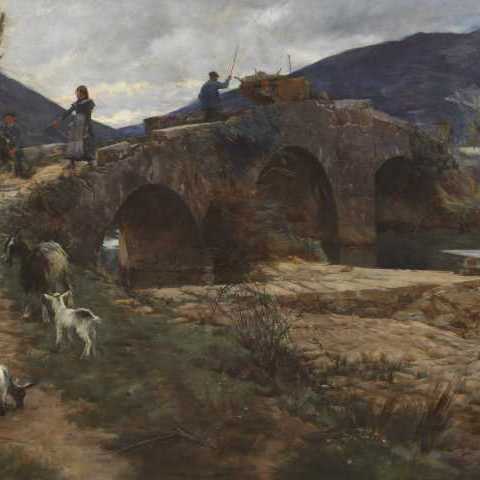Messums
12 Bury Street
St. James's
London
SW1Y 6AB
United Kingdom



British Impressionism and the ‘en plein air’ painters of Cornwall’s Newlyn School have been at the heart of Messum’s ever since David Messum opened his first gallery in 1963. As the business approaches its sixtieth year, both remain central to that original vision as this major new exhibition at Messum’s St. James’s gallery illustrates with exciting new discoveries and previously unrecorded paintings.
A significant find and a key highlight is the rediscovery of Forbes’ 1900 Royal Academy exhibit ‘The Old Bridge’ which received significant accolades at the time. David Messum knew of the painting from a colour plate in the first monograph of the artist published in 1962 by Mrs Lionel Birch, and was delighted when the family who had owned it since 1899 got in touch with a view to selling the masterpiece. Possibly the greatest exponent of the ‘plein air’ painting tradition, Forbes stalked the day for the right light and the late evening sun reflecting on this Roman bridge in Ascain stopped him in his travels through Northern France. This magnificent painting will be on view at Messum’s St. James’s and available on the open market for the first time in over a century.
Whilst Stanhope Forbes is considered to be the founder of the Newlyn School, Harold Harvey (1874-1941) was the only artist actually born in the area and his paintings are devoted to the townsfolk and their daily lives. ‘Penzance Quay’ and the ‘Bridge at Newlyn’ do not seek to glamorise and offer a faithful record of - a simple scene of early 20ht Century British social realism. Purchased directly from the artist, they remained with the family ever since and this will be their first appearance on the London art market.
The highlight of the Impressionist paintings is the glorious ‘Blue Thames, End of Summer, Chelsea’ by Theodore Roussel, probably the most important painting by artist still in private hands. Roussel came across to England and quickly orientated himself to the progressive impressionism that was being fostered in London. Alongside Walter Sickert and Philip Wilson Steer he was selected for the London Impressionists exhibition at the Goupil Gallery in 1889, at which the resplendent ‘Blue Thames, End of a Summer Afternoon’ was exhibited.
The artistic estates of two men who carried the ethos of Impressionism well into the twentieth century are both represented by Messum’s, and are included in this latest show: French-born Lucien Monod and his English-born cousin Wilfrid de Glehn. Their appearance marks both the ‘past, present and future’ of Messum’s - their historical link with the de Glehn Estate dates back to the early 1980s and heralded the recent introduction of the Monod Estate, forming the opening show at Messum’s new St. James’s gallery in March 2020.
As with the artists of the Newlyn School, even among its modern and contemporary artists Messum’s continues to have an attachment to those who possess a sense of place: there is Ruskin Spear with his London streets and characters; Mary Potter and Mary Newcomb in East Anglia. Messum’s stable of talented contemporary artists illustrate the diversity at the heart of contemporary British art, linking tradition, history and experimentation, revealing how art never stands still – how it is always building upon its foundations to push itself forwards and ever onwards, always offering something new as it points towards the future.
Exhibition dates:
26th May - 18th June 2021 Messum’s St. James’s, London
Fully illustrated 64 page exhibition catalogue with contributions from authors Kenneth McKonkey and David Boyd Haycock, £15
